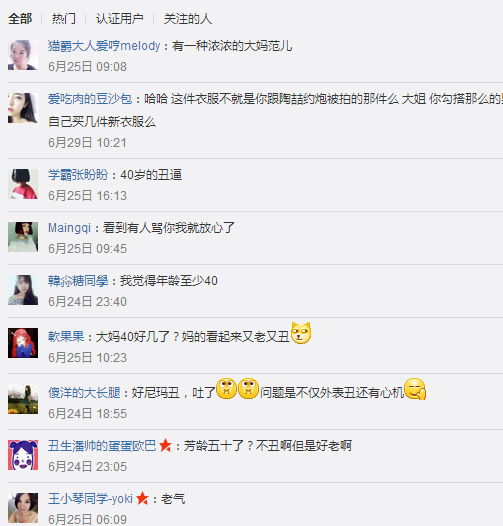Liu Guoliang’s "suspected" slap? Hao Shuai caused an uproar on the Internet (with photos)
| [Content at a glance]Recently, a video that has been circulated on the Internet has aroused criticism from the outside world against the China table tennis team-in a dinner for the China table tennis team, Liu Guoliang, the male table tennis head coach, was in public? The player Hao Shuai slapped him in the face. |
News source: Chongqing Evening News
 |
Liu Guoliang (left) and Hao Shuai are in the game.
Introduction: It is nothing new to have fights or even murders in sports circles in China. However, in the China table tennis team, which has always been regarded as "well-disciplined and well-managed", there is almost no such negative news. However, a video that has been circulated on the Internet recently has aroused criticism from the outside world against the China table tennis team-in a dinner for the China table tennis team, Liu Guoliang, the male table tennis coach, was in public? The player Hao Shuai slapped him in the face.
Chongqing Evening News: Yesterday, Liu Guoliang, the client, first said "I can’t remember clearly" under the pressure of the media, and later thought that "it was only a joke at most". Regardless of the truth of this matter, as a head coach, this kind of parental management should really attract attention.
There was a storm on the wine table.
Liu Guoliang "suspected"? Hao Shuai.
Yesterday, a video posted on a domestic portal website caused an uproar. The video image in less than 1 minute shows that several male players and coaches of the China table tennis team were having dinner in a restaurant at that time. In the second half of the chaotic scene, Liu Guoliang suddenly got up, came behind Hao Shuai, who was sitting opposite the table and talking on the phone, grabbed Hao Shuai’s phone with his palm? Hao Shuai a slap in the face.
According to the introduction of the website, the shooting date of this video is not recent, but May 27th this year. Judging from the clarity of the video, it should be a shot accidentally captured by a groupie on the spot with his mobile phone, and the photographer was not sitting at the same table as the China table tennis players. From the analysis of the characters in the picture, it was a group of men’s table tennis team of China who were dining out at that time, including Liu Guoliang, coach of the men’s team, Sean Xiao, Hao Shuai, Chen Qi, Malone and Dan Mingjie who had not left the team at that time. You can’t see where the dining place is on the video. Because the video time is too short, it is not clear what happened before and after the incident.
From this 48-second video, you can roughly see the following process:
At that time, the atmosphere at the wine table was very active. There are white wine and coke on the table, and the vegetables and soup are steaming. Liu Guoliang sits on the right side of the screen, with Sean Xiao, a bald coach, and players Ma Long, Chen Qi, Dan Mingjie and others at the same table. On the wine table, everyone is laughing happily, but Hao Shuai, who is sitting on the left side of the picture, has been calling. Suddenly, Liu Guoliang, who was joking, stood up, bypassed most of the table and came to Hao Shuai. He grabbed Hao Shuai’s phone and then slapped Hao Shuai in the face.
Hao Shuai wanted to stand up and argue, but he finally held back. At this time, the atmosphere on the wine table was no longer laughter, and the expressions of the whole table became a little stiff. Liu Guoliang took Hao Shuai’s phone and walked back to his seat.
The first impression that this video gives people is that Liu Guoliang seems to be dissatisfied with Hao Shuai’s phone call during the dinner, and then he went forward to "teach" him a lesson. After this short image of several tens of seconds was posted on the Internet by unknown people, it quickly caused an uproar to China table tennis team and Liu Guoliang.
Storm protagonist
Guoliang Liu
At the age of 31, China was the first Grand Slam winner of the World Table Tennis Championships, the World Cup and the Olympic Games, and won the world championship and the Asian championship for many times. He is now the head coach of the China table tennis men’s team.
Hao Shuai
23-year-old, joined the national first team in December 2000, and was one of the champions of the men’s team in the Asian Games last year. She won good results in the Open for many times and was called the promising star of China men’s table tennis.
Liu Guoliang responded that I was just joking.
“? The video of "People" set off a debate among netizens on the Internet, and Liu Guoliang obviously felt the pressure. Yesterday, Liu Guoliang publicly stood up and declared that he didn’t remember it, and even with these actions, it was only "I made a joke". It is the first time that Liu Guoliang, who has always kept a certain distance from the media, has come forward to make a personal statement about a "dispute" that has long passed without any conclusion.
No one knows why, nearly four months after the incident, "? People "video just appeared on the network. However, the negative impact on China table tennis team cannot be avoided. Yesterday afternoon, the party Liu Guoliang stood up for the first time and explained the matter. Liu Guoliang first asked about the source of this video, and then said, "Drink? Hao Shuai box on the ear "thing should not really play, at most just a joke with Hao Shuai. "Everyone is a man, and it is inevitable that they will make a joke or something." Liu Guoliang said that he really didn’t remember when it happened. Anyway, what is certain is that he would never hit Hao Shuai in front of so many people.
"I think it should be a party with the group, but I really can’t play Hao Shuai in front of so many people. If you say it’s still possible on the field, are you kidding? " Liu Guoliang said, I can’t remember this joke, but I think it should be a party in the team.
In order to know the truth of the matter, the portal website that published the video connected two other parties in the video yesterday afternoon. One was Hao Shuai who was "beaten" and the other was Malone who was eating at the same table. It is understood that the China table tennis team is currently participating in the Asian Championships in Yangzhou. After dialing Malone’s phone number and hearing the interviewer tell the content of the online video, Malone immediately excused himself by playing the game at night. Subsequently, the interviewer dialed the phone number of Hao Shuai, the protagonist in the incident. After hearing the news that "he was beaten by coach Liu Guoliang while eating" in the video, Hao Shuai was somewhat surprised, but he didn’t make any comments or comments on the incident and simply hung up the phone.
Later, I called Hao Shuai and Malone many times, but they never answered.
Handsome? People detonate netizens’ saliva
"Liu Guoliang on the wine table? After the video of Hao Shuai’s slap in the face was posted on the Internet, it immediately triggered comments from netizens. Many netizens expressed their indignation at Liu Guoliang’s move. Of course, some calm netizens said that because the video is too short, the real situation on the scene is not clear, so they don’t believe it. People ",more agree with Liu Guoliang’s explanation of" joking ".
Angry people said
Liu Guoliang went too far.
The biggest response caused by the "beating" incident is negative. A large number of netizens said that Liu Guoliang’s move was incomprehensible.
Some netizens said: "As a head coach, you should be generous to others, and you should not be close to the players. Liu’s performance is too disappointing. " Some people also said: "Liu Guoliang’s position in my heart has completely collapsed. Can an official destroy people to this extent?" "No matter what Hao Shuai said or did, Liu Guoliang, as a coach, just shouldn’t hit people! I don’t think any official gave him the right to hit people. " "If this continues, I think more people will doubt what he is teaching, and sooner or later he will fall into a crisis of confidence."
Some netizens were shocked: "I have seen it again and again in shock, and my mood has not yet come out of shock. You take a closer look at the expressions of the players after Liu Guoliang hit Hao Shuai. This is not a joke at all. I really don’t know what to say … "
The calm person said
At first glance, it is a joke.
There are angry voices, and naturally there will be voices of support and tolerance. Although these netizens did not deny the authenticity of the video, they said that it was just a misunderstanding of the audience, or even the photographer’s ulterior motives. Liu Guoliang was "actually joking".
A netizen’s statement is very representative: "It seems that Liu Guoliang seems to have drunk too much, so it shouldn’t be intentional! Don’t be so absolute! Things may not be like this! " Some netizens said: "If Liu Guoliang really does this, the relevant authorities will definitely deal with it. With so many people present, everyone will know the truth. " Facing the Olympic Games, I hope that the national table tennis generals will live in harmony, work together and win glory for our country. Bring more exciting games to everyone. " "Liu Guoliang has come forward and expressed his sincere attitude. It seems that things are not as bad as shown in the short video. This was originally a joke, and the relationship between Liu Guoliang and the players has always been very good. " "it’s not that serious, it seems that everyone is discussing something, but someone is deserting and talking on his mobile phone. Liu Ye is walked over and hit it gently. The video is not heavy at all, use it? A slap in the face is too much to describe! "
"Obviously is a gentle caress, how can be said to be? A slap in the face What a disease! I think it’s totally ok for a coach to do that. My teacher always knocked me on the head in high school before I was admitted to college. "
Give Liu Guoliang a heads-up
A short video made Liu Guoliang, who had a good reputation before, suddenly be pushed to the forefront.
Judging from Liu Guoliang’s explanation of "joking", it seems that this incident is just an episode in a wine table, which is not worth making a fuss about. It’s not worth making a fuss to analyze Jong Liu Guoliang’s personality and have such an episode with his players during the gathering. As many table tennis fans know, Liu Guoliang, as a young marshal, gets along very well in the China table tennis team, and his personal feelings with young players such as Hao Shuai and Malone have always been good. It should be very intimate and casual for everyone to have dinner outside the training competition. An episode like this at the dinner table can be regarded as a trivial matter between friends.
However, people don’t need to know what the incident is really about. From the content of the screen alone, it is illegal for Liu Guoliang to get together with the players at the wine table. Because the Table Tennis and Badminton Center of the State General Administration of Sport has clearly stipulated that the coaches of the national team are prohibited from drinking before 2008. As the head coach of the men’s team, Liu Guoliang openly took his players to drink in public, which has violated the regulations.
Such a "trivial matter" is not considered a "trivial matter" when it comes to the China table tennis team, which has always been regarded as the most strict and effective sports management in China. Not to mention that as a public celebrity, such a misleading plot in such a party will cause adverse reactions in society; The party wine table alone has seriously violated the relevant regulations of the Table Tennis and Badminton Center. What’s more, according to the video, Liu Guoliang’s slap at that time changed the face of the people present. As the head coach of China table tennis men’s team, Liu Guoliang’s behavior is puzzling-is this what a coach did?
The reason why table tennis in China has always stood at the top of the world is that, in addition to the abundant talents, a more important magic weapon is the scientific and humanized management. This management mechanism of table tennis team has also become a classic model promoted by the State Sports General Administration to various sports teams. However, strict management does not mean the extreme worship of "parents’ will", but the strictness based on scientific supervision and humanization. If we rely solely on authority and suppression, the result will only be counterproductive in the end. (Hu Min)
Other social news:
·The premiere of the National Grand Theatre is dedicated to the builders (with photos)
·Perspective of disputes between owners and property in urban residential quarters
·Memorial album of Japanese invaders discovered in Shanglin, Guangxi during the Anti-Japanese War
·After the two-phase maintenance of Potala Palace, more than 1,000 passengers per day are guaranteed.
·The bride was washed away when the wedding dress reservoir opened on the new beach (photos)
·Chongqing bulk moon cakes are fully bargained at 14.8 yuan per catty (with photos)
·"China’s first car" appeared in Nanchang, Zhou Enlai and Zhu De (photos)
·Beijing customizes the Olympic personalized tour for overseas tourists, and takes a one-day tour of the old city.
·The metal model of "Bird’s Nest" will be launched, which is highly collectible (with photos).
Editor: Zhang Pengfei
























